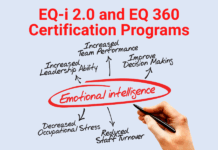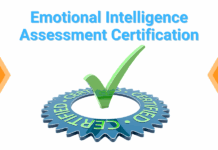
Defined: Oriented toward service of customers' needs and greatest possible satisfaction, as the central operating principle.
“A business is simply an idea to make other people’s lives better.” — Richard Branson
A customer-focused company is one that prioritizes customers' interests, delivering solutions that are focused on that singular priority. Success in relationship-building with customers is understood as a natural effect of focusing on serving their interests and on engaging with them on the best ways to do so. Whether your department has as its customer an external or internal group or individual, the business principle remains the same—sustaining customer satisfaction is the fundamental requisite for your sustained success. Leaders with weaker focus on customers' interests are less creative in innovating new effective solutions, and their stagnant or slow growth reflects that deficiency. By contrast, the ideally customer-focused company is highly responsive to customers' changing needs, and the organization thrives as a result.
Leaders Skilled in Customer Focus
- Prioritize nurturing existing customer relationships over casting about for new customers
- Identify and implement solutions for customers' problems
- Consistently strive to build a customer-focused culture
- Implement product and service enhancements that will benefit customers
- Use customer feedback as the foundation of new product and services development work
- Only settle for quality that consistently exceeds customers' expectations
- Monitor systems and performance to ensure customer focus is top of mind in all processes
- Do the research to develop insight into customers' needs and desires
What Prevents the Ability to Be Customer Focused
- A belief that you or your team already have the knowledge, skills, and experience to develop and deliver the “right” solution (i.e., you are smarter than your customers)
- A focus solely on your own outcome metrics, without realizing that a focus on the customer is what drives those successful metrics
- Overly focusing on performance requirements as specified by a contract or service agreement, which may not completely reflect the desires of customers
- A neglect of engagement and communication tools and processes to interact with customers
- Lack of knowledge of customers' actual needs, desires, preferences and expectations
- Overly focused on what's happening inside your company and team instead of how the company's activities affect customers and what their responses to the company's actions will be
- Poor management support for initiatives, routine processes and individuals struggling to achieve above and beyond for customer satisfaction
- Making unrealistic promises to customers that cannot be honored by the company
Self-Coaching Questions on Customer Focus
- Do the innovations generated by your team mostly target new markets, compared to those aimed at exciting your existing customer base? If so, how will you address that?
- Does your strategic growth plan commit new investment and reallocated resources into new customer acquisition, customer services, and retention programs in proportions that make the best sense to you for a customer-focused company?
- What is your personal level of confidence in the relative cost-effectiveness and higher long-term profit potential of focusing on current customers as the company's top priority, vs. focusing on new customer acquisition, production cost-cutting, price-slashing, or other approaches to increasing profit margins?
Tips for Being Customer Focused
- Communicate regularly with your team's external or internal customers. Ask for their feedback and ideas for improvements. Encourage them to contact you; stay engaged.
- Anticipate changes in customers' needs and desires, and be prepared to provide solutions.
- Find ways to add value to your service. Consistently demonstrate for customers your commitment to serving their interests.
- Imagine yourself in your customer’s position, dealing with your company. Ask yourself what you would like most about the experience and what you would dislike most.
- Provide the fullest possible range of options for customers to use in communicating with your company. Enable as many digital and analog communications modes as are preferred by your customers.
- Recognize the value of complaints from your customers. Expect and accept complaints as opportunities to improve performance and develop a satisfied customer. Listen and act promptly to remedy problems.
- Be diligent in continuing the development of customer service employees, policies, systems, and processes. Seek resources for updating technologies that facilitate service quality that meets the expectations of today's savvy customers.
- Reward exceptional performance. It's what makes it possible to increase customer satisfaction, whether it's in production, shipping, delivery, customer service, returns processing, housekeeping, or elsewhere. Whatever work contributes to the optimum functioning, health and morale of the team contributes well to customer relationships.
- Recognize that today's customers are well aware of their vast options as consumers and that they are not hesitant to switch suppliers quickly when they're expectations are not met.
- Identify your company's, or your department's shortcomings in delivering the outcomes that are most advantageous for your (internal or external) customers, and implement corrective measures.
- Focus every day on eliminating obstacles to customers' complete satisfaction with your company. Test options, and implement as many solutions as possible.
- Have team members spend time on side-by-side call monitoring with customer service agents, to have their own real-time opportunity to be a part of customer interactions.
Example Goal Statements:
- I will meet with 12 customers in 12 weeks and generate a summary report of my findings.
- I will increase my customer focus performance, as measured by my next 360-survey.
- I will review the last 90 days help-desk tickets and create a new list of priorities for the product development team.
Developmental Action Plan for Becoming Customer Focused
- Evaluate your own attitude about the significance of effectively nurturing customer relationships. Do you think and speak of customers only in terms of your metrics? What is the nature of the language you use and the kinds of discussions you typically have regarding customers? Is it mostly expressions of statistical information, or is it rich with examples involving customers' experiences and outcomes in working with your team?
- Analyze customer service metrics for the past weeks, months, quarters, and years. Note trends, and examine specific cases that contribute to negative and positive trends. Create plans that increase the use of methods yielding positive results and that reduce the risk of failed approaches.
- Conduct a competitive market analysis featuring your own experience talking to competitors' reps by phone and by shopping their locations, to evaluate your own experience as a prospective customer. Share your research with your upper management and your team. Implement any new techniques you discovered to sharpen your team's competitive edge in any area of customer focus.
- Conduct a thorough customer satisfaction survey, by phone, in person, or by Survey Monkey. Present your findings to upper management and to your team. Include questions about product and service features, handling of complaints, key issues, their ideas for improvements, etc., and their level of overall satisfaction.
- Armed with information you've gathered through your research and analyses, assess your products and services and the customer experience your company provides, and map out a plan to make necessary improvements.
- Schedule a 20-minute role-playing session with your team, to practice various problem resolution scenarios, including mock customers (internal or external ones) who are dissatisfied with either your group's product quality or service.
- Huddle with your team after your next regular meeting for a brainstorming session to build a list together of new ideas for helping customers succeed, by offering some added value that helps them reduce their costs, improves their experience, helps them impress their clients, etc.
- Talk to your team about the business consequences of framing their conception of customers as numbers, vs. as people with their own human needs, problems, desires and goals. Have each team member say something about what her/his job has to do with customer satisfaction and the importance of customers' satisfaction to her/his personal financial and career interests.
- Work with your team to help them appreciate the monetary value of reasons why your customers need you, which is probably zero or a negligible number, especially if you're in a highly competitive industry. Help them contrast that value to a monetary value of the reasons why you need your customers. That number is the amount of their paychecks, benefits, and any potential performance bonuses. Contrast the striking difference between the two quantities to help the team stay grounded in the priority of ensuring customer satisfaction.
- Collaborate with your staff to develop two lists—a list of reasons why your customers should continue doing business with your company and a list of new, additional realistically accomplishable reasons that you want to be able to offer them for staying with your company going forward.
- Add an extension to your customer training practices, to provide a little deeper dive into some facet of your self-service information systems, ordering platform, product features, mobile app, etc.. Work with the customers on integrating their devices, and get them more involved with your team.
- Identify and list unprofitable customers. Work with appropriate company authorities to modify offerings to those customers, to require increases of orders, reduced services, etc. to make the accounts profitable, or to help them transition to alternative providers.
Suggested Additional Resources
- Miller, R and Miller, L (2008), That's Customer Focus! The Overworked and Underappreciated Manager's Guide to Creating a Customer-Focused Organization, BookSurge Publishing, ISBN-10: 1419686038.
- Cochran, C (2006) Becoming a Customer-Focused Organization, Patton Press, ISBN 9781932828054.
- Gulati, R and Oldroyd, J (2005, April) The Quest for Customer Focus, The Harvard Business Review, Retrieved from: https://hbr.org/2005/04/the-quest-for-customer-focus.
- Debruyne, M (2014) Customer Innovation: Customer-Centric Strategy for Enduring Growth, Kogan Page Limited, ISBN-13: 978-0749471644, ISBN-10: 0749471646.
- Ulrich, D and Smallwood, N (2007) Leadership Brand: Developing Customer-Focused Leaders to Drive Performance, Harvard Business School Publishing, ISBN 13: 978-1-4221-1030-0, ISBN 10: 1-4221-1030-3.
Suggested Internet Search Terms
Client focus, customer focus, customer intimacy, customer satisfaction, customer retention, focus on current customers, relationship building with customers, customer acquisition vs customer retention, net promoter score





